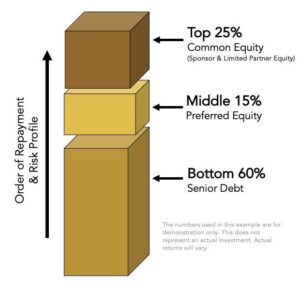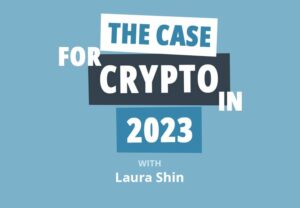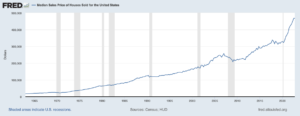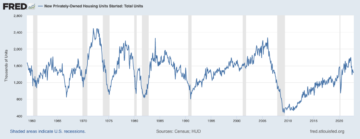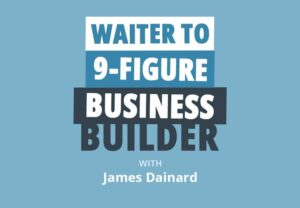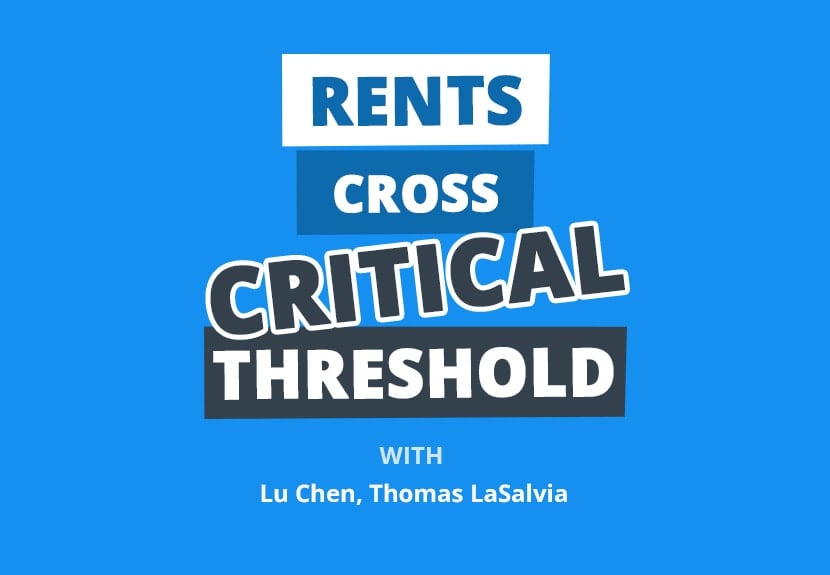
Rent prices have steadily risen for as long as we can remember. But, few of us would have ever expected the unimaginable rent hikes of 2020-2022. With major metros seeing double-digit year-over-year rent percentage bumps, residents were forced to throw a larger chunk of their income toward housing. Now, with higher rent prices than ever before, America has become “rent-burdened,” and a dangerous threshold has been crossed.
What’s causing this rise in rents? Are investors to blame? And what’s a solution that could benefit builders, buyers, and renters? We’ve got Lu Chen and Thomas LaSalvia from Moody’s Commercial Real Estate division to give us their findings. Lu and Thomas’s team have been tracking rent prices carefully, logging which cities have seen the most significant price increases, which are becoming increasingly unaffordable, and what can be done about the problem. With a lack of housing supply and inflation eating away Americans’ income, what can everyday investors like us do?
Thankfully, there is a solution to this problem that could help curb unaffordability while presenting a profit for investors. Lu and Thomas go over exactly what would have to happen to return to a normalized, affordable housing market and what’s hurting our efforts to get there. Plus, with rents becoming unaffordable for many young Americans, our Dave duo asks, “Is real estate still safe to invest in?” All that and more in this edition of BiggerNews!
Click here to listen on Apple Podcasts.
Listen to the Podcast Here
Read the Transcript Here
David:
This is the BiggerPockets Podcast show 775.
Thomas:
The problem here, it’s not so much the rent levels, it’s the pace at which they’ve increased. And these households, particularly lower income households, when you deal with something like apartment leases, which are only about a year, they’re going to get quite the shock, especially because their income isn’t going to keep pace nearly to those types of levels to which the rent can be increased.
David:
What’s going on everyone? It’s David Greene, your host of the BiggerPockets Real Estate Podcast here today in Hawaii, recording with the other Dave, my partner in capitalism, not partner in crime, different PIC, Dave Meyer. And we are here bringing you the information that you need to make money in real estate and find financial freedom. Today is an awesome show where Dave and I are interviewing Lu Chen and Tom LaSalvia from Moody’s Analytics talking about the housing un-affordability problem? Crisis? How would you mark it, Dave?
Dave:
Yeah, I think either one. We all know that housing has become really unaffordable. This is impacting both first time home buyers, people who are just trying to buy a home. And for investors too, it’s become really challenging to afford most markets in the country right now. And Tom and Lu provide some information, not just about housing unaffordability but rent unaffordability and how that’s impacting everyone, including real estate investors. Many of whom who have benefited from the increase in rents but they also provide some really interesting perspectives about why fixing these unaffordability problems is really in everyone’s best interest.
David:
Yes, it is. And that is such a good point. And if you listen to today’s show, you will understand more of the why we have this problem. And if you understand the why, you will see the moves that you can make to actually earn income, build profitability, and build wealth in this market all while doing something to solve a problem and hopefully make housing more affordable for everyone else.
Dave:
I think one thing about this episode that’s really interesting, and like you said, understanding the why, is a lot of the narrative I hear, you might hear this too, is people are like, “Rents are going to crash.” Or, “The housing market’s going to crash. What goes up must come down.” Which is just not true in economics. But I think they do a really good job of explaining why they think unaffordability is going to be a problem that permeates the housing market for the foreseeable future unless some deliberate actions are taken. And I think this is helpful both in the context of, again, improving the affordability issue, but also just in understanding what is going on in the housing market and why prices are the way they are. They do a really good job and provide some really interesting data that will help you just contextualize your understanding of housing.
David:
That’s exactly right. And the more you know, the more you can take advantage of making smart financial decisions, which gives you an advantage over all the people that are not listening to this podcast. So buckle your seatbelt, strap yourself in, we’ve got a great show for you. Before we bring in Lu and Tom, today’s quick tip is see how you can be a part of the solution and check out the Moody’s Analytical report that we refer to today on housing unaffordability. So they put together something very cool that shows major metro markets and where rents are in relation to wages. Spending 30% of your income on rent is now the new normal in many US metros and some are even higher. So go ahead and check out our show description if you would like to download that report and check it out. Arm yourself with more information and be a little bit more like Dave Meyer tomorrow than you are today. That’s my advice. Dave, anything you’d like to say before we bring in Tom and Lu?
Dave:
No, not at all. I think you covered it all. So let’s bring on Tom and Lu.
David:
All right, welcome to the show Thomas and Lu. Thomas, if you don’t mind, we’re going to start with you. Can you tell us a little about yourself?
Thomas:
Thomas LaSalvia, Director of Economic Research, Moody’s Analytics CRE. CRE being commercial real estate. I’ve been in the industry for well over a decade, had some background in academia, was an instructor for quite a while, but very happy to be bringing my knowledge, expertise to the show. Thank you for having me.
David:
Let me tell you something that I’ve always thought that you didn’t ask but I’m going to share anyway. I think it’s hilarious that the name Moody’s is Moody’s. Because when you think of Moody’s you think of objective, factual, trustworthy, reliable, boring, yet I can stand on that, right? It is the opposite of someone who’s moody, whose opinion changes all the time. Have anyone else ever mentioned the funny hypocrisy in your name and your company?
Thomas:
We do occasionally get some conversations that go into laughs regarding the name, but no, it’s a wonderful, long history with our founder. So that’s where that name’s coming from.
David:
Of course. Yeah. Okay. I’m glad it’s not just me. And then Lu, welcome to the show. Thanks for being here. Can you tell us a little about yourself and your role at Moody’s?
Lu:
Absolutely. Thank you for having us again, David. My name is Lu Chen, I’m a Senior Economist on Moody’s Analytics CRE sale leadership team. So I have over a decade of capital market working experience. Working on the team, my main focus is apartment market, migration, senior housing, housing affordability, affordable housing, you name it, everything within this residential circle.
David:
Okay. And as the senior economist, in layman’s terms, I’ve always wanted to ask this, does that mean you’re the oldest? Does that mean you’re the strongest? Does that mean that if a lot of people … if you died, somebody else takes your position? Does that mean you work on certain things? What does that mean in practical terms that you get to be the senior economist?
Lu:
I really think it’s because of the age and no complaints.
David:
Okay. Well, you would’ve fooled me with that, Lou, because you look much younger than I do. If anybody’s watching on YouTube, you’ll easily tell. So you got the best of both worlds, right? You have your looks, look young, and your wisdom is there as a senior economist. So we are very lucky to have you on the show today.
Lu:
Thank you, David.
Dave:
All right, well Tom and Lu, it’s great to see you again guys. Welcome back. I’d love to just hear a little bit about this incredible housing affordability report that you both put together. It really is impressive, everyone should go check it out. Can you tell us just a little bit in a high level what your findings were?
Lu:
So really this is a very interesting journey for our team to started on since early 2022. So thinking of at that time, the United States was really at the ramping of having higher inflation and people’s migration pattern has changed because of COVID. So at the beginning, we have seen people coming out of some of the bigger metros, going to some of the destinations, Florida, Texas. Really to enjoy that flexibility of working elsewhere, doesn’t necessarily have to be close to where they work. And that created this interesting dynamics, which we have not seen very often in the past. It was seeing rental prices taking up, housing prices taking up. In some of the hot destinations, or we call them pandemic darlings, but then people realize they still have to come back to work. Even if that doesn’t mean they have to come back to the office five days in the week, they’re getting themselves prepared, geared up to come back to the office at least one or two days in the week, every now and then mingle with friends, coming back to the city life.
So we are seeing some of the reverse or normalization of that migration pattern. And that quickly filled up the rental level, the rental prices in some of the traditionally very rent burdensome, expensive metros, including New York, including Boston and many other places. We observed that in our data set and this idea bubbled up and came up to the surface. This is really something we should be putting effort on. We should be diagnosing, understanding the pattern of the rental affordability. Because if you are looking at the rental price taking up double-digit year over year, that means exponential growth of the rent burden to individual household. So early on in the spring of 2022, the team … it’s really the team effort. Although I know you would like to put names to this report, it really is a team effort. We started off, we observed that rapid increase of this rental affordability until at the end of 2022.
US as a whole, we are finally seeing the median income household are paying roughly around 30% on an averaged rental unit on the market. And that 30% is a critical number. That usually means, on an average basis, the median income household in the United States have been rent burdened. And it’s a very tough journey for us to continue observing how the rental price dynamics, how the rent changes, are reshaping, affecting some of the nuances. And the latest report that we have published by the end of last month really depict that nuanced picture that we are seeing the rent decline at the beginning, in the spring of 2023, started to shed some light at the end of the tunnel. So we are seeing slight retreat in that rent burden from about 30%, now somewhere in that 29.6 percentage range. It’s a little improvement but we are still uncomfortably seeing the rent burden being elevated close enough to the 30% rent burden threshold.
Dave:
I’ve asked you this before, just as a teaser, you both were on On the Market episode 81, if you guys want to hear about that. But to me, this idea of the rent burden being 30% is something worth exploring a little bit more. I’ve heard this number a few times that the maximum or ideal percentage of income that renters should spend on housing is 30%. Why 30%?
Thomas:
Symbolic? It’s not 30%. So 30% is supposed to signify that if you are spending more than that, you may have to make sacrifices in terms of other necessities. Any less than that and it frees up income for you for those necessities. But not only those necessities, but other qualities of life. So the 30%, it’s the HUD number, housing urban development number. It’s been used for quite a while. But reaching 30%, more symbolic than anything. We have a housing crisis, rent is too high and ultimately this is not going away anytime soon. So to piggyback off of Lu’s earlier statement, why we’re doing this, because this story’s going to stick around for a long time and we want to be part of that solution.
David:
That’s a great point, Thomas, that many of these numbers, like 30% of your income should go to rent. There’s a lot of other data points in the personal finance space just like that, that are not based on any objective assessment of anything. It’s just a number that a human brain likes and it creates a baseline understanding so that you don’t go do something crazy like spend 70% of your income on housing. But people hear it and they just take it at face value like, okay, the experts say don’t do that. So if the rent would be 30.5% of their wages, they’re like, “Oh, I can’t do that. That’s too expensive.” And there’s a lot of things that float around in our space that work the same way and I’m just glad to hear that you point it out. It just … Someone pulled it out of their butt somewhere.
Thomas:
Ask anyone in New York City and they’ll tell you they’re spending a lot more than 30%.
Dave:
Yeah, I mean, in high income areas it’s been over 30% for a long time, right?
Thomas:
Lu, you have those numbers, right? New York City’s been rent burdened on that average level for quite a while.
Lu:
So if we look at the rent burden history, New York City, as far back as we start tracking the time series across all the major metros in the United States, New York was the only one who breached that 30% threshold back in 1999. So that’s the earliest data points that we’re able to track and provide to the marketplace. And ever since then, we start seeing the increase of the rent and not being able to catch up. The income growth has created the pockets around the US map to join this rent burden list. So we have Miami, Boston, San Francisco, at the first 10 years of the new century, which has been joining New York as the rent burdened metro. And all these metro have become rent burdened for various reasons, whether that’s technology boosted, whether that’s travel destination boosted, better weather, migration destination both internationally or domestically.
So they, because of various reason, have joined that list. So fast-forward to end of 2022, early 2023. So there are seven metros which has breached the 30% rent burden threshold. And again, that’s a symbolic number. So if we look at down the list, New York, Miami, Los Angeles, Boston has always been rent burdened over the past decade. We also have Fort Lauderdale, Palm Beach, northern New Jersey, Tampa, Orlando, and San Francisco, either already crossed that 30% or close to that 30% threshold. So all these metros, for various reasons, have joined this and that’s at the metro level.
But on the other hand, if you look at individual neighborhoods within the metro, in certain neighborhood, going back to the New York example for median income family, for average renter to live in Manhattan. Most likely they will feel not just rent burdened but severely rent burdened, meaning they have to pay more than 50% of their income on rent. But if you move them to the outer borough, if they decided to live in Bronx, the situation will improve quite a bit. So it’s very interesting to see how this bigger metro has been evolving over the past two decades and having this agglomeration of luxurious class A apartment building clustered around certain neighborhoods, creating that natural bifurcation between the upper tier and lower tier apartment markets and boosted the average rental affordability up at the metro level.
Dave:
I’m hoping maybe we can put this into context by just understanding not rent … Rent obviously in terms of share of median income is super important, but also just absolute numbers. How much has rent gone up since the beginning of the pandemic and where are we sitting in terms of the median rent right now?
Lu:
So for New York, from pre-COVID up until the first quarter of 2023, cumulatively, the rent has increased by 16.8% and you have to take that number with a grain of salt. Because if we look at the absolute average rent level for New York City, and that’s uncomfortably sitting about $4,000 per month. So as of first quarter 2023, average rent for New York City is $4,270. And the second one on the row, Miami, which has the current rental income ratio way up above 30% threshold, sitting at 42%, is average rent $2,149. And that is significant increase, nearly 30% jump as compared to pre-pandemic. Third one, Fort Lauderdale, also in Florida, increased more than 30% cumulatively over the past three years. So if you look at where the rent level was pre-pandemic versus where they are, so that percentage number really tells a strong story of how significant the positive migration pattern has been creating this inflationary pressure on the rental market for some of the HUD markets, especially in Florida.
Thomas:
The problem here, not so much the rent levels, obviously they’re incredibly high in certain metropolitan areas, but as Lu alluded to, it’s the pace at which they’ve increased. Right? This is very similar when we talk about how the commercial real estate market and investors are upset with the Federal Reserve. Well, it’s not that interest rates are going up. I mean, obviously they would like them to be lower and money to be cheaper to make investments in lending, but at that pace. And when you have that pace of increase, it’s an actual shock to the market that people can’t really prepare for. And these households, particularly lower income households in those areas, being unprepared for that type of shock. And when you deal with something like apartment leases, which are only about a year, they’re going to get quite the shock, especially because their income isn’t going to keep pace nearly to those types of levels to which the rent can be increased.
Dave:
Very helpful context here. I’d like to just try and understand from both of you, but Tom, let’s start with you. What does the fact that rent has gone up so much and is now becoming burdensome in more and more markets, tell us about the nature of the housing market and housing stock in the country right now.
Thomas:
Yeah, great question. And you used the words housing stock and I think that’s the important thing. Lots of numbers being thrown around but somewhere between two and five million housing units shortage that we have in this country. We have not been building enough single family or multifamily, although multifamily has picked up. Single family picked up for a little while and now it’s pulled back a bit. And it’s created this situation where this burden, this 30% number … Again, it’s not the 30% number, but it’s the rapid increase and that is putting stress onto many households and many of them being lower income households or those households just starting off. When you’re talking single family, I know we’re not talking a ton of single family today, but when you’re talking that, it’s hard to get on that housing ladder. When you’re talking multifamily, if you want to remain in a nice neighborhood in a decent apartment, that’s a bigger and bigger chunk of your budget and that means you can’t save for that down payment to get on that housing ladder.
David:
Interesting.
Thomas:
And that’s a lot of wealth that’ll be wiped away for the last couple of generations that just can’t get there without, say, their parents help with the down payment. And that’s what is happening a lot, which is furthering the problem of inequality amongst families within the United States. Now it’s a problem all around the world of course but it certainly is something worth thinking about when we’re in discussions about housing in general, housing supply, housing policy, this isn’t going away.
Lu:
Very interesting discussion on the housing stock because you have a overall number, you have the overall housing shortage, but if you look at over the past decade what kind of apartment has been built and offered to the marketplace. Majority, vast majority of them coming online are class A luxurious buildings and they become even more and more expensive and creating this bigger bifurcation between class A versus class B, C. If you look at the class B and C units, so the vacancy generally sits around two to three percentage point. It’s extremely tight market which fits into the appetite of median income household, workforce household or even lower income families on the income spectrum. And that also created this tremendous opportunity when people are migrating back in early 2021, we are seeing above average household formation. And sorry for using that jargon, it’s really just to quantify how many new households are forming in this marketplace. So how many people have to leave their parents’ couch, breaking up with their roommates, having to rent individual unit on this market.
That has been above average for about a whole year since the second half of 2021, all the way to the first half of 2022. That create this tremendous demand shock to the marketplace. We don’t have enough units and we have increasing amount of demand which are demanding to live in a rental unit. And then you combine with what we have seen at the beginning of the pandemic, many of the expensive metros were having all these people leaving the metro, leaving elsewhere. It actually created this, we call it a pandemic discount, in many cities, San Francisco, New York, Boston. So when people are coming back, they are seeking that opportunity of this once in a lifetime pandemic shock created discount and quickly boosted that rental increase, which we have seen in the later half of 2021. And that has been going on as Federal Reserve has been increasing the interest rate.
And single family housing was one of the first sectors which are absorbing that shock. So we started seeing and recording single family housing decline, the price decline in many of those expensive metros. New York, San Francisco were among the first, which we started seeing the single family housing price decline because the demand instantaneously cooled. And thinking of those potential could be homeowners have no option but to live in the rental units for longer period of time. So that actually sustained multifamily fundamentals, even though that was the time when the consumer sentiment was at the historic low. We are seeing all these recessionary [inaudible 00:23:50] in the single family housing sector. It actually created this opportunity to stabilize the rental market. So that’s really what has been created this boost and then sustained the growth for the multifamily rental across the United States. And eventually push us up to that 30% threshold, which we have seen by the end of 2022.
Thomas:
This begs the question, we’re talking about housing supply, housing stock, why not, right? And what’s going on now? There’s a couple of things I want to say to this because I think this conversation’s really valuable because I don’t want to just sit here and complain about rent being too darn high. I want to actually talk about the economics and what’s going on and how maybe the market, or maybe the market can’t, help alleviate this problem. Right now what we’re seeing is a halfway decent amount of construction within multifamily given these rent increases. But a lot of those projects were started when financing rates, construction costs were a lot lower. Through the pandemic, we all know supply chain issues, construction costs went up.
And obviously right now we’re dealing with high interest rates, high financing. So what we have is we have this bit of a bump in new supply coming online this year. That will help. And in fact, we’re anticipating slightly below average rent growth for this year. But then we move forward, and because of still high construction costs, labor supply issues, particularly in the construction industry, high interest rates that aren’t going away anytime soon and we’re going to start to see a decline again in new construction and deliveries in multifamily in the next few years. And that’s going to bring this problem back to a head. So this problem of a shortage isn’t going away because the numbers have stopped working.
David:
So often when we look at the data points, like is real estate going up or down? Is housing affordable or not? We interpret it through an emotional lens. I’m angry because housing is expensive. Something needs to be done. I pound the table. A wiser approach is to ask the question of why. Well, we import a lot of our building materials from other countries, and as supply chains get disrupted, they become more expensive, it becomes less efficient. I don’t have any data to support this but I feel pretty confident that there are less people that are wanting to enter into the trades than we used to have.
The younger children are not growing up saying, “I want to work in the hot sun and carry around wooden beams and nail them to things.” They’re all wanting to be an influencer, working in software development there. They’re wanting to be an entrepreneur of their own business. It’s not as popular as there was to be finding plumbers and people that want to hang drywall and do those jobs that really make the country run. So it’s going to lead to inefficiencies in the construction process. I also think in general I see more regulation from local municipalities than when I was a kid. Is that another thing you want to comment on?
Thomas:
I was just going to say that absolutely has hindered development. And yes, while you were a kid, but also prior to that … Or not as much as maybe while you were as a kid, but still prior to that as well. It’s a problem that I think has been here for a long time. And one of the reasons I wanted to comment on this, and I don’t want to jump around too much, but I do potentially see this current housing affordability crisis, the rapid increase in rent to income ratio prices, along with some of the changes in dynamics during the pandemic, is that policy makers are starting to see the errors that have been made over the last 50 plus years. Whether they be zoning regulations or other types of regulations that have hindered the supply side of this equation. And so I do see a little bit of positive movement there. Maybe not enough yet but maybe that’s a silver lining with all of this.
David:
That’s a great point because we’re getting hurt on the supply side from all the things we just mentioned and we’re feeling pressure on the demand side because we’ve created all of this money that has to go somewhere and real estate is where most of it’s going. And so we have an ever-increasing demand. You’re getting pinched on both ends, which creates the unaffordability. And you also had mentioned something earlier in the podcast I wanted to comment on. When housing becomes unaffordable, it disproportionately hurts low income people significantly more than someone with higher income. So if you’re living in New York, you’re making $20,000 a month and you want to spend 30% of that money on rent. That’s right around, I believe, what, $6,000? So you have $6,000, this means you have $14,000 to live on, assuming we’re not talking about taxes here. Well, the car you’re going to drive, the food you’re going to buy, the movie you’re going to watch is probably slightly more expensive in New York than it’s going to be in Louisiana or Oklahoma, but not that much.
So with $14,000 left, you don’t need to worry about going broke. You can buy plenty of food. You’re fine. So if your housing expense was 50% and you had to spend 10 grand, you have enough money to get by. Now you take that same person who’s making $3,000 a month in Louisiana. At 30% of their income, that’s closer to almost a thousand dollars. They got to live on less than two grand a month. Food costs pretty much the same as it does in New York. It’s very close. All of your other expenses are going to be similar. They don’t have enough to make ends meet. And so every time we see this unaffordability thing, of course it sucks for the rich, just like it sucks for everyone else, but it doesn’t suck as bad.
And that’s what’s concerning about the situation that we’re in with inefficient political structures that make regulation tougher, with our insistence on importing everything from other countries. Which puts us in a vulnerable position where they get leverage in the relationship as well as we like what we saw during COVID when supply chain issues were disrupted. I think we’re still trying to work through some of the problems that came from that. And then you couple into that that there’s not a whole lot of 14 year olds in high school right now saying, “I want to grow up to hang drywall. I want to build roofs in the middle of the summer.” They’re all wanting to do something that’s a little bit easier and cooler. This unaffordability thing doesn’t seem like it’s going away. Is that the same perspective that you two have, Lu?
Lu:
Absolutely. So David, I really like your perspective. At the peak of [inaudible 00:30:32] we are seeing the rapid increase of the rental affordability issue across many of the surprising metros, I have to say. Many smaller metros in Florida, Las Vegas. When we are looking at how fast double-digit growth, in many cases over 20, 30% of rental increases, from pandemic over to a good chunk of 2022. Surprisingly, their median household, median income households, income actually declined. It’s very interesting to see a smaller population, which for the benefit of migration, came to the city, pushed the rent high. But on the other hand, the local residents, who’s earning the hourly wages, especially for those metros.
Which has a bigger population on the leisure and hospitality, some of the hourly wage, the industries, they didn’t really enjoy that benefit of increasing rental. So that really created this social aspects of this issue, which is really demanding the public and private partnership to solve this big puzzle for us. So some interesting development, because I’m personally located in California, so even prior to pandemic, we created this accessory accessory dwelling unit, ADU, in the policymaking. And we are expanding on that policy front. So we are allowing more than 500 square footage of ADU being built either attached or detached to your single family residency.
David:
You’re referring to the legislation that stopped cities from preventing that from happening. They can’t come in and say “No, no permit, you’re not allowed to build the ADU.” They have to allow it.
Lu:
They have to allow that. And they’re actually eliminating a lot of the barrier so that the permitting process is extremely easy, it’s easy to get approved, you just have to set up [inaudible 00:32:32] individual units for the kitchen. You have to have separated doors. But it’s fairly easy to go through that loophole. And just a few months back, the city, San Francisco City has also created a policy to allowing rezoning, converting some of the obsolete office properties into residential. So they could be high rises located in the premium location of the city. [inaudible 00:33:00] the downtown area but converting vacant office building into multifamily. So those are some of the creative ways of revitalizing the city vibe, saving the downtown, but also creating these additional units to solve the housing shortage.
Thomas:
Not a panacea, but cumulative. All of these regulations that are relaxed or some of these public private partnerships will be helpful. Don’t let a good crisis go to waste. And again, that’s my glass half full look at this situation as it comes to this. Just speaking with some of the industry players, there seems to be a bit of movement in further developing what they call workforce type housing or lower income housing as both a social benefit to society that they want to be part of. And some of them are starting to see the tax benefits, some of the other benefits associated with it, paying off. So it’s not going away, David. You said it, I said it a couple of times already. Not going away.
There are no panaceas when it comes to this. But we can add up everything. All the things you mentioned on the supply side, all the things from the regulatory perspective, and then even on the demand side. I’ll throw one more thing into this conversation that we haven’t addressed yet. We’re Americans, we like big houses, and when you build a big house, those are scarce natural resources and scarce labor resources that are being devoted towards that one large house for that one family. Where those resources, if divided up, sounding like a socialist here, but if they were divided up in some way, a lot more housing for a lot more people and take the pressure off prices.
Dave:
Tom and Lu, I have a question. I’m in a way just playing devil’s advocate here and I just want to get your understanding of this. But most of the people who listen to this podcast are real estate investors who are interested in real estate investing and many of us have, in ways, benefited from rising rents, as it’s gone … over the last couple of years. So I’m curious, what role do you see real estate investors having in this? Why should real estate investors be concerned about this problem? And if we are concerned about this problem, what can real estate investors do to try and improve it?
Thomas:
From a long-term perspective, I think we all need to care. I’ll give you a really astute example of why it matters maybe for a particular city or neighborhood. If you’re focusing on only building class A and you have rents going up and you’re happy about that, that’s wonderful. You made a good investment, it’s doing well. What happens when the service workers, the nurses even, can’t live anywhere near that particular location and now they’re way far away? How does that work out? There’s a gap there. And then the people within your building that were living there and doing well and paying higher rents all of a sudden might move because their services are gone from that area because no one was building that workforce housing anymore for that area. So there is this argument to be made that we need to balance that out from a societal perspective. But from a longer term investment perspective, you want to be in an area that has housing for all income classes because ultimately we’re a society and we need that.
Dave:
That makes sense. And I’m asking just from a devil’s advocate standpoint. But you see that a lot in a lot of markets. I invest in a area in a small mountain town in Colorado and you just … it’s almost impossible for a lot of the people who support the economy of the town to live there. And it has really negative impacts for the entire society there. So that’s definitely something that we’ve seen over the last couple of years
David:
In law enforcement, in my previous profession, this is rampant in the Bay Area. Wages are high but housing is higher. And so I didn’t know any cops that lived in the Bay Area cities, none of the San Francisco PD guys, Oakland PD guys, they don’t live there. They live 45 minutes to an hour and a half away where housing is somewhat affordable, especially when they’re new. Same thing for a lot of the nurses that work in the industry. I suppose the doctors can afford to live there but they usually don’t want to be raising families in the middle of those areas. So what you have is people that are already working 10-hour shifts, eight hour shifts, that are now tacking on an hour to an hour and a half of commuting, sometimes both ways. Lost productivity. They’re not doing anything to benefit society when they’re sitting in commute traffic. I mean, I suppose they’re listening to our podcast. So we benefit from that little bit.
Which might be one of the reasons that podcasts have taken off. There could be a point there, is housing unaffordability created a run in the YouTube and podcasting space. But it doesn’t get talked about. So you may be getting raises, however, your workday is 20% longer because you have to commute so far to be getting into work. You’re not being compensated for that time but you’re still having to put in some form of work. And I think it leads to a lot of frustration. It can lead to a lot of feelings of unfairness. It is a really bad problem. And then, I don’t know, we haven’t got into this a lot, but I know you guys have also found that wages, though they can be increasing, are not increasing at the same degree that food, energy and housing are increasing. And so it ends up being like a pay cut when you really balance it all out.
Lu:
Absolutely true. I know Federal Reserve doesn’t like to see this wage growth spiral, which created this increasing amount of inflationary pressure created by the increasing of the wage level. But on the other hand, well, we are looking at the data. So how we have started off from early 2000, all the way, now reaching 30% thresholds. It’s really that gap between how fast the income has been growing versus how quickly our rent has been growing. And for the investors, I really want to say, if you look at what has happened over the past economic cycles. So single family housing sector usually will get a hit and usually that hit is very strong.
But if you look up and down the historical cycles, multifamily was able to hold up fairly well, although I wouldn’t say it’s countercyclical, it does follow the business cycle. It usually hold up really well until the end of each economic cycle. It started to get some shock when people start moving back to the single family housing market. And even with that, the rent decline was very marginal. So this is a good asset class to be invested in, and especially be holding for a longer period of time, that actually preserved that housing stock, creating that rental unit, rental society, which allows renter household to enjoy the benefit of renting apartments.
David:
All right. So Lu, for investors that want to help with this housing affordability problem, what advice do you have?
Lu:
So there are many ways the investors, developers, architects, the real estate society can help solve this problem. Of course building more houses, contingent on the available land, available zoning policies. But more importantly, I do see a great opportunity for us, the real estate participants, to step into this affordable housing space. So what is trendy on the market is a concept called inclusionary housing. So it really poses an opportunity that we could have introduced both market rate rental units and with the allocation of somewhere between 10 to 20 percentage affordable units on the same floor, in the same unit, in the same building.
And that creates this policy benefit for investor to enjoy some of the tax exemption, some of the abatement, and also enjoy some of the capital funding. We all know we are in this market where the available capital is very scarce. And especially 2023 or even early part of 2024, going to be very, very tight. But affordable housing funding is the area which we can always seek potential opportunities. And that is both economically and socially beneficial for the lower income households because we do in desperate need of this affordable housing market. And especially we are facing extremely long waiting list for many of the expensive markets. If you look up and down California, we are looking at years of waiting for low-income families to get affordable housing units, but that’s a great market that we can consider for potential investment.
Dave:
Lu, what does it look like for an investor to actually invest in low income housing? How does that work?
Lu:
So usually, it creates this opportunity for low income families earning 70% of area median income, we call it AMI, to apply for such unit. And when they applying for the building permits, they will go through multiple different certificates and different permitting process to get applied with special funding for building out affordable housing. With that, there are often policy limitation of what kind of housing and where such affordable units can be built out. So it’s a whole industry which typically involves close collaboration between investors and mortgage lender and banks. Even the federal and local government level to be involved in creating that opportunity. It’s really a joint venture between the public and private.
Dave:
And I mean, just asking from pure investor standpoint here, is the objective here to make it so that for an investor, the returns or the risk and return profile for building or investing in affordable housing is similar to that of building or investing in private housing or free market housing, whatever you want to call it?
Lu:
I wouldn’t say similar. I would say the risk profile is going to be lower because oftentimes the low income families are subsidized by section eight and other housing voucher. So the housing units will be rated at the market slightly below market rate, but you would be getting steady income cash flow because all these rental payments will be heavily subsidized by the public sector.
David:
All right, Thomas, with all this information at play, the burdens and obstacles that affordability is going to have to make its way into the housing market like we’d all like to see, how confident do you feel with real estate as an industry that it is a solid place for investors to be putting their capital?
Thomas:
Real estate, residential real estate in particular, has tremendous long-term tailwinds. So while we talk about the problems within the market, that doesn’t necessarily mean that the market is going to falter. If anything, we want more investors. And even with more investors, this is where I want to caution, because investors might say, “Well, more investors, more development, that’s just going to pull rents down and we want an affordability issue.” But Dave, it goes back to what you were saying earlier in the conversation we were having about the value of having a variety of class of apartments and housing through communities all around the country. That will supersede all. So again, talking in circles here about this. Multifamily as an asset class, incredibly valuable. Overall, very steady. We’re going to see a slight bit of stress in the next year or so for certain properties that have to refinance.
Because we are seeing rent levels stagnate a little bit. We’re seeing high interest rates. And if you financed that property a few years ago at very, very low interest rates, you’re going to get close on that debt service coverage ratio that banks want to see and lenders want to see back to 1.5 plus. So without going into that jargon, but you guys are investors, you know about that type of stuff, there’s a little concern there. But again, if you’re buying multifamily, residential in general, and holding it for the long haul, if you’re buyers and not sellers, you’re in great shape now. You’re in great shape for a long time within multifamily. And I hope that with the … what Lu just mentioned about low-income housing tax credits and some of the other public-private partnerships going on, that the numbers start working better for the workforce and affordable housing.
Dave:
Awesome. That’s a great segue here to the end. Last question I have here for you. Which is everything that you’ve learned about affordable housing in the United States, and given the fact that most of our audience here, real estate professionals, real estate investors, are there any last things that you think we should know or think that we should … could benefit from your research, before we get out of here?
Lu:
Absolutely. So I just feel like not just us, not in academia, in industry, but even up at the policymaking level, everybody has been putting a lot of attention on this rental affordability issue. So we’ve seen various actions trickling down from the federal level, to the state level, to the municipal level, are addressing this issue. And they realize the policy barrier is one thing but also there’s tremendous opportunity for the public sector to work together closely, both on the capital side, on the zoning side, policymaking. In every single part of this economic cycle, they have to work closely. Because we realize the private part, the private entity, oftentimes cannot shake up what was already up there.
But when we realized the tightness of the market, when we realized the affordability pressure, when the public sector started stepping in, if you look up and down across United States, how many states and municipals actually pass legislation? Affordable housing, whether that’s [inaudible 00:48:29] whether that’s zoning, whether that’s tax, every single component surrounding this affordable housing, housing affordability, we are moving in the right direction of creating, nurturing and reinforcing that strong relationship between the policymaker and the private investor, architects, developers, the entire circle to work close to that goal. It’s economic driven but it’s also policy driven. Because this has become not just economic phenomena but also a very important social aspects for every single renter household’s wellbeing.
David:
I thought opportunity zones were the perfect marriage of exactly what you’re talking about. It was this idea of we need investors, we have a problem, we need the government to cooperate. Rather than pitting us against each other, we cooperated and a lot of areas that really needed infrastructure and revitalization all benefited from people that were good at understanding how to develop areas. They understood concepts like highest and best use. We improved a lot of areas for people. We stabilized a lot of markets. You actually now have jobs that feel comfortable moving into those areas because there is a stable living situation for the workforce. And we fixed a problem without the government solution of the DMV, which is always what happens when they step in and they try to do it themselves. So I love what you’re saying there of this marriage of these two people working together to solve the problem. I hope we see more of that in the future.
Thomas:
If you want to hear from me, I’m going to make it really simple and concise here, and this is very broad across multifamily and really CRE investing in general. I love what’s going on with mixed use neighborhoods, whether they are master planned or they are within existing areas. This could be a whole nother podcast for you guys, but there’s something really, really fantastic happening in terms of how, again, we’re breaking down some of those zoning laws and we’re really building up the value of a mixed use area. And I think there’s going to be a lot of potential in those going forward.
Dave:
Awesome. Well, thank you both so much for being here. We really appreciate it. People want to get your amazing report. Where should they do that?
Thomas:
Ah, go to cre.moodysanalytics.cominsights and you can see all of our most recent research including this report.
Lu:
Sorry, Dave, I really have to correct Tom on that. It’s a forward slash.
Thomas:
No, it’s not. Is it?
Dave:
They’re always forward slash.
Thomas:
Oh yeah, of course. They’re always forward slash. Ah [inaudible 00:51:10].
Lu:
Do it again. Do it again, Tom.
Thomas:
No, Lu, you have to do it now.
Dave:
No, this is better.
David:
No, we’re leaving this in here.
Dave:
We love the mess-ups. It’s the best part.
David:
Quick tip of the show, it’s always forward slash. You’re welcome.
Thomas:
Ah, that’s the best tip we have to leave with. Darn it. All right.
David:
Thomas, Lu, it’s been wonderful having you on. Thank you so much for taking some time out of your day to talk with us about the numbers of what’s going on in real estate. And even more importantly, how we as investors can use these to make better financial decisions and what we can do to improve the situation for everybody involved and give investors a better name in the world of real estate. Really appreciate you guys sharing your knowledge. And Dave Meyer, you think I wasn’t going to mention this. This is your fifth recording today. Dave has been going hard in the paint for the entire day. He actually-
Dave:
Just doing of the work.
David:
-outlasted his camera.
Dave:
My camera broke.
David:
Dave worked longer than his camera could exist. It melted down in the middle of the show. We had to start it over. So if you’re watching it on YouTube, that’s why he looks a little bit different. That is how much we at BiggerPockets care about bringing you the information that you need. So thank you for joining us, and if you can appreciate Dave, please go leave us a five-star review wherever you listen to podcasts. Those mean a lot too. Thomas, Lu, thanks so much. Where can people find out more about each of you?
Thomas:
Welcome to reach out to me at [email protected] Happy to answer questions, talk more about the real estate market or certainly go to our Moody’s website.
Lu:
[email protected] Easy-peasy.
David:
I think you’re easy-peasy might have been my favorite part of this entire episode. That was adorable. Thank you, Lu.
Lu:
Thank you for having us.
Thomas:
You guys are phenomenal. It was our pleasure.
David:
This is David Greene for Dave “The Terminator” Meyer signing off. Someone get that man a sandwich.
Watch the Episode Here
Help Us Out!
Help us reach new listeners on iTunes by leaving us a rating and review! It takes just 30 seconds and instructions can be found here. Thanks! We really appreciate it!
In This Episode We Cover:
- America’s “rent-burdened” status and why prices have crossed a critical threshold
- Real estate markets that have seen the largest increase in rent over the past three years
- Luxury housing and how its development is hurting the effort to increase affordable housing
- Whether or not investors are to blame for rents skyrocketing
- “Inclusionary housing” and how investors can fill the affordable housing need while making a profit
- Whether or not real estate is still safe if renters get priced out of the market
- And So Much More!
Links from the Show
Links from the Show
Interested in learning more about today’s sponsors or becoming a BiggerPockets partner yourself? Email [email protected].
Note By BiggerPockets: These are opinions written by the author and do not necessarily represent the opinions of BiggerPockets.
- SEO Powered Content & PR Distribution. Get Amplified Today.
- PlatoAiStream. Web3 Data Intelligence. Knowledge Amplified. Access Here.
- Minting the Future w Adryenn Ashley. Access Here.
- Buy and Sell Shares in PRE-IPO Companies with PREIPO®. Access Here.
- Source: https://www.biggerpockets.com/blog/real-estate-775
- :has
- :is
- :not
- :where
- $3
- $UP
- 000
- 1
- 10
- 14
- 16
- 1999
- 20
- 2021
- 2022
- 2023
- 2024
- 23
- 24
- 30
- 50
- 500
- a
- Able
- About
- above
- Absolute
- absolutely
- Academia
- accessory
- across
- actions
- actual
- actually
- add
- Additional
- addressing
- ADvantage
- advice
- advocate
- affecting
- affordable
- affordable housing
- again
- against
- age
- ago
- ahead
- All
- alleviate
- allocation
- allow
- Allowing
- allows
- along
- already
- also
- Although
- always
- amazing
- Americans
- among
- amongst
- amount
- an
- Analytical
- analytics
- and
- Angeles
- Another
- answer
- anticipating
- any
- anymore
- anyone
- anything
- anywhere
- Apartment
- apartments
- appetite
- Apple
- applied
- Apply
- Applying
- appreciate
- approach
- approved
- ARE
- AREA
- areas
- argument
- ARM
- around
- AS
- aspects
- assessment
- asset
- asset class
- associated
- At
- attention
- audience
- author
- available
- average
- away
- back
- background
- Bad
- Balance
- Banks
- barrier
- based
- Baseline
- basis
- Bay
- BE
- Beach
- because
- become
- becomes
- becoming
- been
- before
- Beginning
- being
- believe
- below
- beneficial
- benefit
- benefits
- BEST
- Better
- between
- Big
- bigger
- Bit
- boost
- Boosted
- border
- Boring
- boston
- both
- Brain
- Breaking
- bring
- Bringing
- broad
- Broke
- budget
- build
- builders
- Building
- Building Materials
- built
- burden
- business
- but
- buy
- buyers
- Buying
- by
- california
- call
- called
- came
- camera
- CAN
- cannot
- capital
- capitalism
- car
- care
- carefully
- carry
- cases
- Cash
- cash flow
- Catch
- causing
- caution
- Century
- certain
- certainly
- certificates
- chain
- chains
- challenging
- changed
- Changes
- cheaper
- check
- chen
- Children
- Circle
- circles
- Cities
- City
- class
- classes
- Close
- closely
- closer
- collaboration
- Colorado
- combine
- come
- comes
- comfortable
- coming
- comment
- commercial
- commercial real estate
- Communities
- Commute
- commuting
- company
- compared
- compensated
- complaints
- component
- concept
- concepts
- Concern
- concerned
- confident
- Consider
- construction
- consumer
- consumer sentiment
- context
- contextualize
- continue
- Conversation
- conversations
- converting
- Cool
- COOPERATE
- cops
- correct
- Costs
- could
- countries
- country
- Couple
- course
- cover
- coverage
- covered
- Covid
- Crash
- crazy
- CRE
- create
- created
- creates
- Creating
- Creative
- Credits
- Crime
- crisis
- critical
- Crossed
- curious
- Current
- Cut
- cycle
- cycles
- Dangerous
- data
- data points
- data set
- Dave
- David
- day
- Days
- deal
- dealing
- Debt
- decade
- decades
- decided
- decisions
- Decline
- definitely
- Degree
- Deliveries
- Demand
- demanding
- description
- destination
- destinations
- develop
- developers
- developing
- Development
- died
- different
- direction
- Director
- Discount
- discussion
- discussions
- Display
- divided
- do
- Doctors
- does
- Doesn’t
- doing
- dollars
- domestically
- done
- Dont
- doors
- down
- download
- Downtown
- drive
- driven
- during
- dynamics
- each
- Earlier
- Early
- earn
- Earning
- easier
- easily
- easy
- Economic
- Economics
- Economist
- economy
- edition
- efficient
- effort
- efforts
- either
- elevated
- eliminating
- else
- elsewhere
- end
- ends
- energy
- enforcement
- enjoy
- enough
- enough money
- Enter
- Entire
- entity
- Entrepreneur
- episode
- Errors
- especially
- estate
- Ether (ETH)
- Even
- eventually
- EVER
- ever-increasing
- Every
- everyday
- everyone
- everyone’s
- everything
- evolving
- exactly
- example
- exist
- existing
- expanding
- expected
- expenses
- expensive
- experience
- expertise
- experts
- explaining
- Exploring
- exponential
- Exponential Growth
- extremely
- Face
- facing
- fact
- Factual
- fairly
- families
- family
- fantastic
- far
- FAST
- Favorite
- Federal
- federal reserve
- feel
- feelings
- few
- fill
- filled
- Finally
- finance
- financed
- financial
- financial freedom
- financing
- Find
- finding
- findings
- fine
- First
- first time
- fixed
- Flexibility
- Float
- Floor
- florida
- flow
- Focus
- focusing
- follow
- food
- For
- For Investors
- foreseeable
- form
- formation
- Fort
- Forward
- found
- founder
- Francisco
- Free
- Freedom
- friends
- from
- front
- frustration
- full
- Fundamentals
- funding
- funny
- further
- furthering
- future
- gap
- geared
- General
- generally
- generations
- get
- getting
- Give
- given
- gives
- glass
- Go
- goal
- Goes
- going
- gone
- good
- good job
- Government
- great
- Grow
- Growing
- Growth
- had
- Half
- halfway
- hand
- Hang
- happen
- happened
- Happening
- happens
- happy
- Hard
- Have
- having
- hawaii
- he
- head
- hear
- heard
- heavily
- help
- helpful
- here
- Hidden
- High
- higher
- highest
- Hikes
- hilarious
- his
- historic
- historical
- history
- Hit
- hold
- holding
- Home
- hope
- Hopefully
- hoping
- hospitality
- host
- HOT
- hour
- House
- household
- households
- houses
- housing
- housing market
- How
- How To
- However
- HTTPS
- human
- Hurt
- hurts
- i
- I’LL
- idea
- ideal
- if
- impacting
- Impacts
- import
- important
- importing
- impossible
- impressive
- improve
- improved
- improvement
- improving
- in
- Including
- Income
- Increase
- increased
- Increases
- increasing
- increasingly
- incredible
- incredibly
- individual
- industries
- industry
- inefficient
- Inequality
- inflation
- Inflationary
- influencer
- information
- Infrastructure
- instantaneously
- instructions
- interest
- INTEREST RATE
- Interest Rates
- interested
- interesting
- internationally
- into
- introduced
- Invest
- invested
- investing
- investment
- Investments
- investor
- Investors
- involved
- issue
- issues
- IT
- ITS
- iTunes
- jargon
- Jersey
- Job
- Jobs
- join
- joined
- joining
- joining us
- joint
- joint venture
- journey
- jpg
- jump
- just
- Keep
- Kid
- Kind
- Know
- knowledge
- labor
- Lack
- ladder
- Land
- large
- larger
- largest
- LAS
- Las Vegas
- Last
- later
- latest
- Law
- law enforcement
- Laws
- lead
- Leadership
- Leads
- learned
- learning
- least
- Leave
- leaving
- left
- Legislation
- Leisure and Hospitality
- lender
- lenders
- lending
- Lens
- less
- Level
- levels
- Leverage
- LG
- Life
- lifetime
- light
- like
- likely
- limitation
- lining
- List
- Listening
- little
- live
- living
- local
- Local Government
- located
- location
- logging
- Long
- long time
- long-term
- longer
- Look
- look like
- looking
- LOOKS
- loophole
- los
- Los Angeles
- lost
- Lot
- Louisiana
- love
- Low
- luxurious
- made
- Main
- major
- Majority
- make
- make money
- Makers
- MAKES
- Making
- man
- many
- many people
- map
- mark
- Market
- marketplace
- Markets
- master
- materials
- Matters
- maximum
- May..
- mean
- meaning
- means
- Meet
- mentioned
- Metro
- Meyer
- Miami
- Middle
- might
- migrating
- migration
- million
- mind
- minutes
- mixed
- money
- Month
- months
- Moody’s Analytics
- more
- Mortgage
- most
- Mountain
- move
- move forward
- movement
- moves
- movie
- moving
- much
- multiple
- municipal
- Municipalities
- must
- my
- name
- names
- NARRATIVE
- Natural
- Nature
- Near
- nearly
- necessarily
- necessities
- Need
- needed
- needs
- negative
- New
- New Construction
- New Jersey
- New York
- new york city
- next
- nice
- no
- normal
- now
- number
- numbers
- Oakland
- objective
- obsolete
- obstacles
- of
- off
- offered
- Office
- often
- oftentimes
- Okay
- Oklahoma
- oldest
- on
- once
- ONE
- online
- only
- Opinion
- Opinions
- opportunities
- Opportunity
- opposite
- Option
- or
- Orlando
- Other
- our
- out
- over
- overall
- own
- Pace
- paint
- palm
- panacea
- pandemic
- parents
- part
- participants
- particular
- particularly
- partner
- Partnership
- partnerships
- pass
- past
- Pattern
- Pay
- paying
- payment
- payments
- Peak
- People
- people’s
- percentage
- perfect
- period
- person
- personal
- Personal Finance
- Personally
- perspective
- perspectives
- phenomenal
- picked
- picture
- Place
- Places
- planned
- plato
- Plato Data Intelligence
- PlatoData
- Play
- player
- players
- playing
- please
- pleasure
- Plenty
- plus
- pockets
- podcast
- Podcasting
- Podcasts
- Point
- points
- policies
- policy
- Policy Makers
- policymaking
- political
- Popular
- population
- poses
- position
- positive
- potential
- potentially
- pound
- Practical
- pre-COVID
- Premium
- Prepare
- prepared
- pressure
- pretty
- preventing
- previous
- price
- Prices
- Prior
- private
- probably
- Problem
- problems
- process
- productivity
- profession
- professionals
- Profile
- Profit
- profitability
- projects
- properties
- property
- protected
- provide
- public
- published
- Push
- pushed
- put
- Puts
- Putting
- puzzle
- qualities
- Quarter
- question
- Questions
- Quick
- quickly
- raises
- raising
- ramping
- range
- rapid
- Rate
- rated
- Rates
- rather
- rating
- ratio
- reach
- reaching
- real
- real estate
- real estate market
- realize
- realized
- really
- reason
- reasons
- recent
- recording
- regarding
- Regulation
- regulations
- regulatory
- relation
- relationship
- relative
- reliable
- remain
- remember
- Rent
- renters
- report
- represent
- research
- Reserve
- residential
- residents
- Resources
- Retreat
- return
- returns
- reverse
- review
- Rich
- right
- Rise
- Rises
- rising
- Risk
- Role
- roughly
- round
- ROW
- Run
- safe
- Said
- sale
- salt
- same
- San
- San Francisco
- Save
- saving
- say
- saying
- Scarce
- School
- Second
- seconds
- Section
- sector
- Sectors
- see
- seeing
- Seek
- seeking
- seem
- seems
- seen
- Sellers
- senior
- sense
- sentiment
- Series
- service
- service workers
- Services
- set
- seven
- severely
- Shape
- Share
- sharing
- shed
- Shifts
- shortage
- should
- show
- Shows
- side
- significant
- significantly
- signify
- signing
- Silver
- silver lining
- similar
- Simple
- since
- single
- sit
- sits
- Sitting
- situation
- small
- smaller
- smart
- So
- so Far
- Social
- socially
- societal
- Society
- Software
- software development
- solid
- solution
- SOLVE
- some
- Someone
- something
- somewhat
- somewhere
- Soon
- Space
- speaking
- special
- Spectrum
- spend
- Spending
- Sponsors
- spring
- square
- stabilize
- stable
- stand
- standpoint
- start
- started
- Starting
- State
- Statement
- States
- Status
- steady
- Step
- stepping
- Stick
- Still
- stock
- stopped
- Story
- stress
- strong
- such
- sudden
- summer
- Sun
- Super
- supply
- supply chain
- Supply chains
- support
- supposed
- Surface
- surprising
- Surrounding
- table
- Take
- taken
- takes
- taking
- Talk
- talking
- tax
- Taxes
- team
- teaser
- Technology
- tell
- tells
- term
- terms
- texas
- than
- thank
- thanks
- that
- The
- The Area
- The Capital
- The Future
- the information
- The State
- the world
- their
- Them
- themselves
- then
- There.
- These
- they
- thing
- things
- think
- Thinking
- Third
- this
- this year
- those
- though?
- thought
- three
- threshold
- Through
- tier
- time
- Time Series
- times
- tip
- to
- today
- today’s
- together
- tomorrow
- Ton
- too
- tough
- toward
- towards
- track
- Tracking
- trades
- traditionally
- traffic
- Transcript
- travel
- tremendous
- true
- trustworthy
- try
- two
- type
- types
- typically
- Ultimately
- understand
- understanding
- understood
- unit
- United
- United States
- units
- until
- urban
- us
- use
- used
- using
- usually
- Valuable
- value
- variety
- various
- Vast
- VEGAS
- venture
- Versus
- very
- Vibe
- Video
- Vulnerable
- wage
- wages
- Waiting
- want
- wanted
- wanting
- was
- Waste
- Watch
- watching
- Way..
- ways
- we
- Wealth
- Weather
- Website
- week
- welcome
- WELL
- wellbeing
- went
- were
- What
- What is
- whatever
- when
- whether
- which
- while
- WHO
- whole
- whose
- why
- will
- wisdom
- with
- within
- without
- wonderful
- wooden
- words
- Work
- work out
- work together
- worked
- workers
- Workforce
- working
- world
- world’s
- worry
- worth
- would
- written
- year
- years
- yes
- yet
- york
- you
- young
- Younger
- Your
- yourself
- youtube
- zephyrnet
- zones



